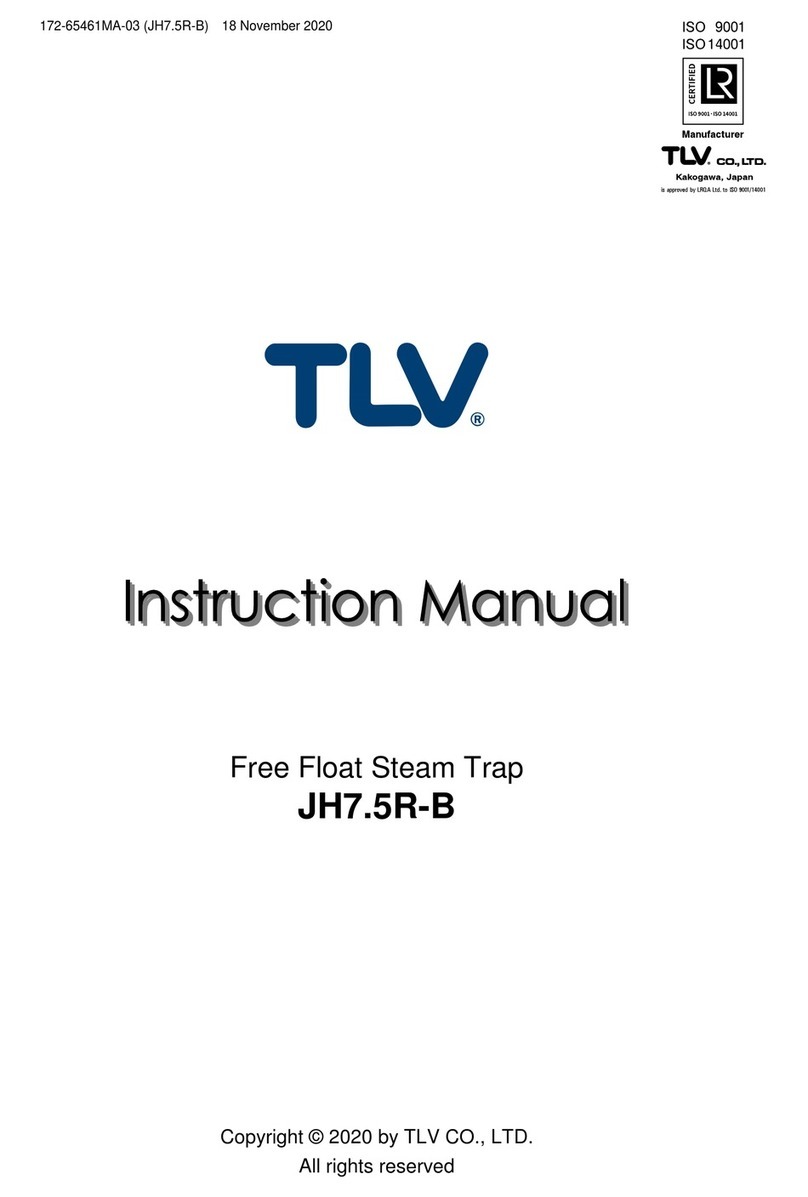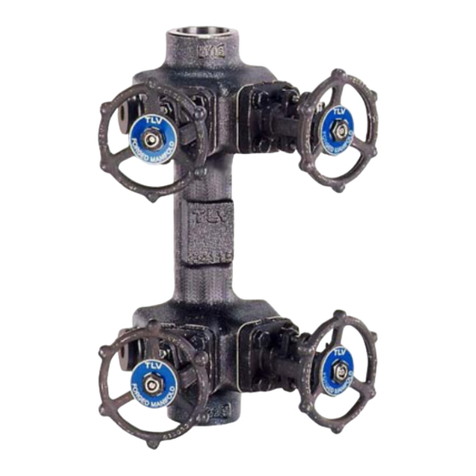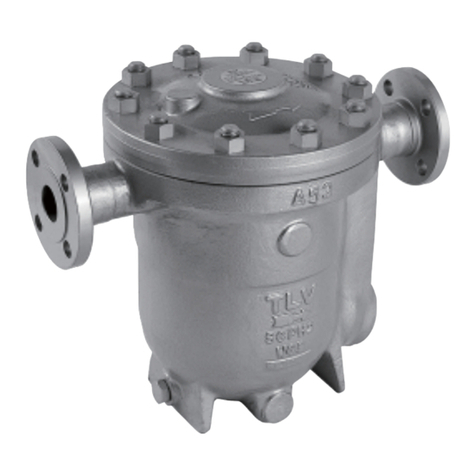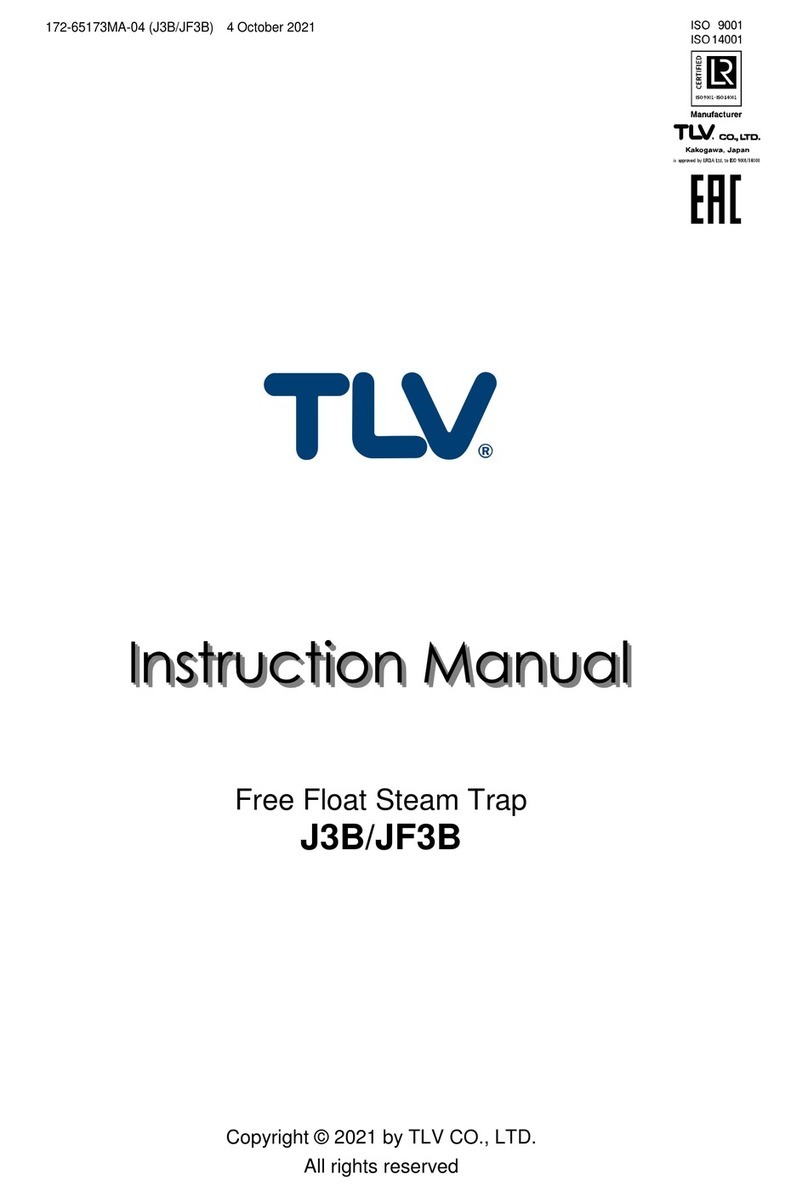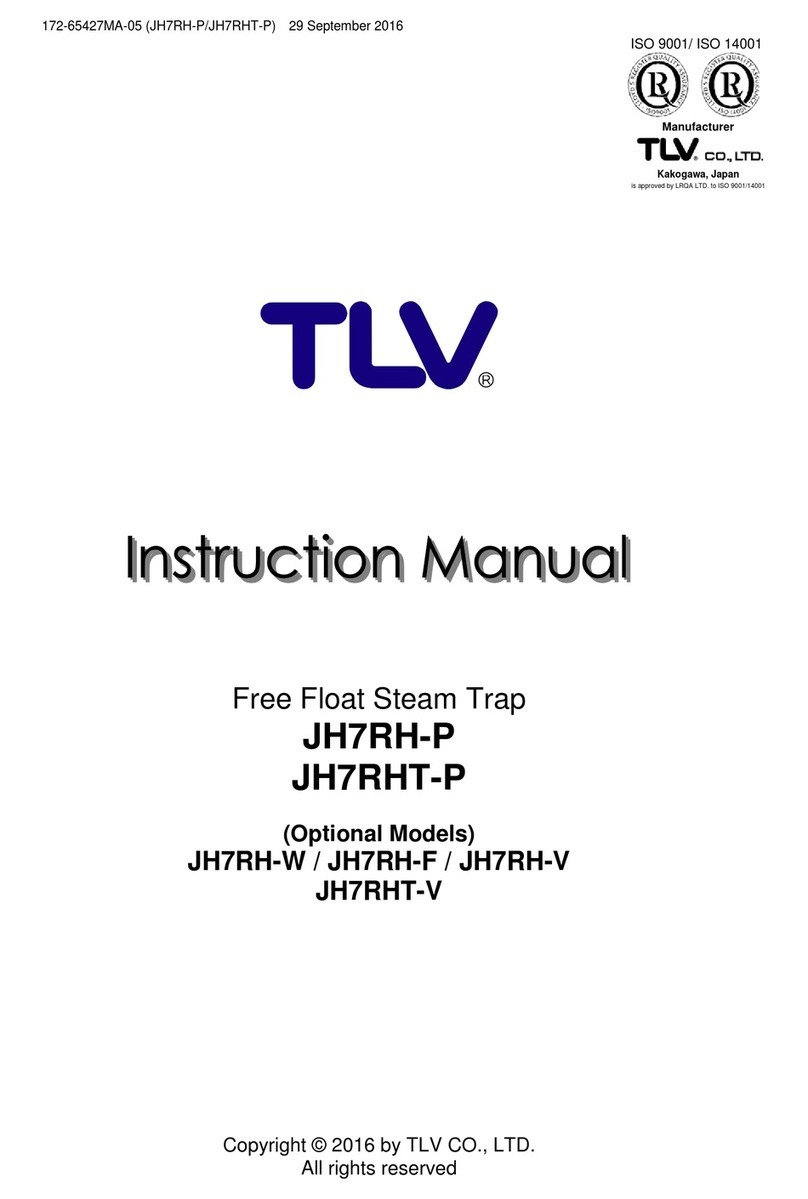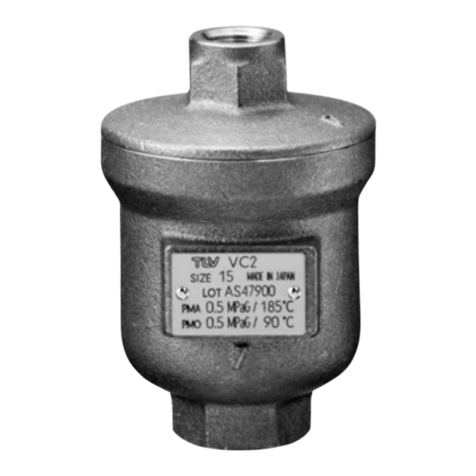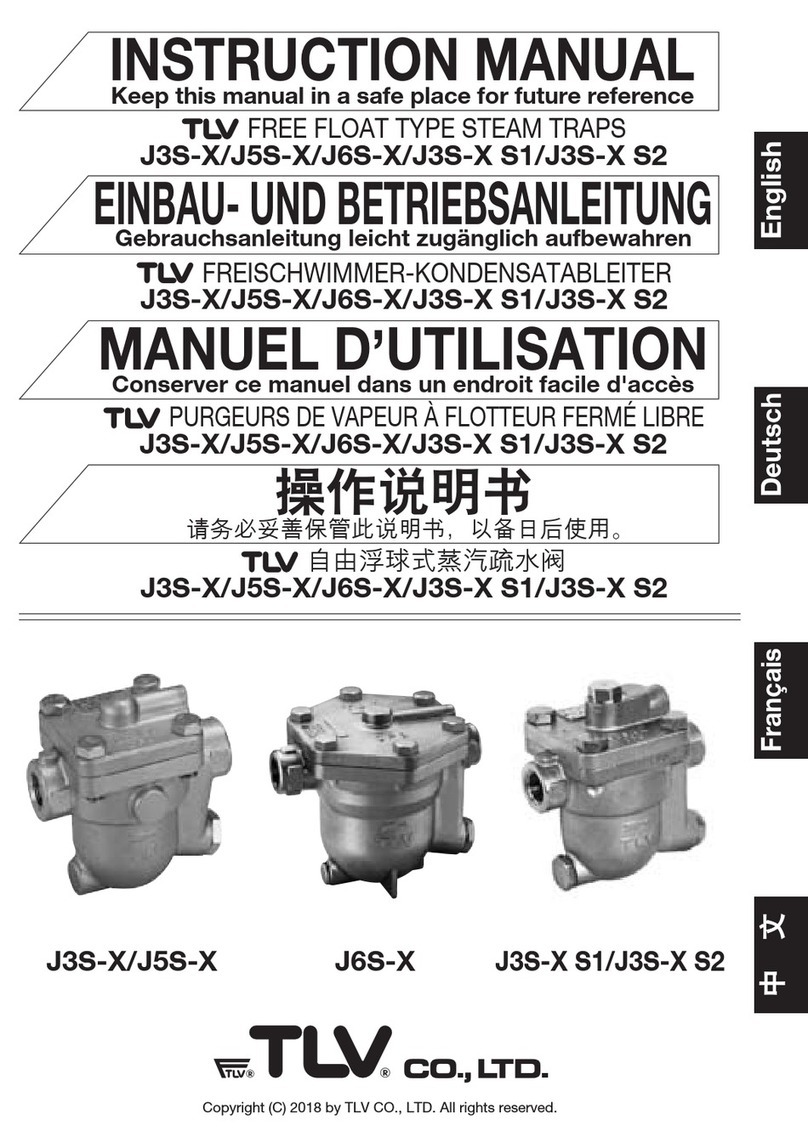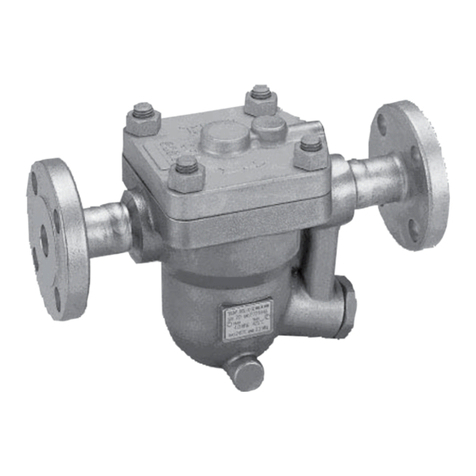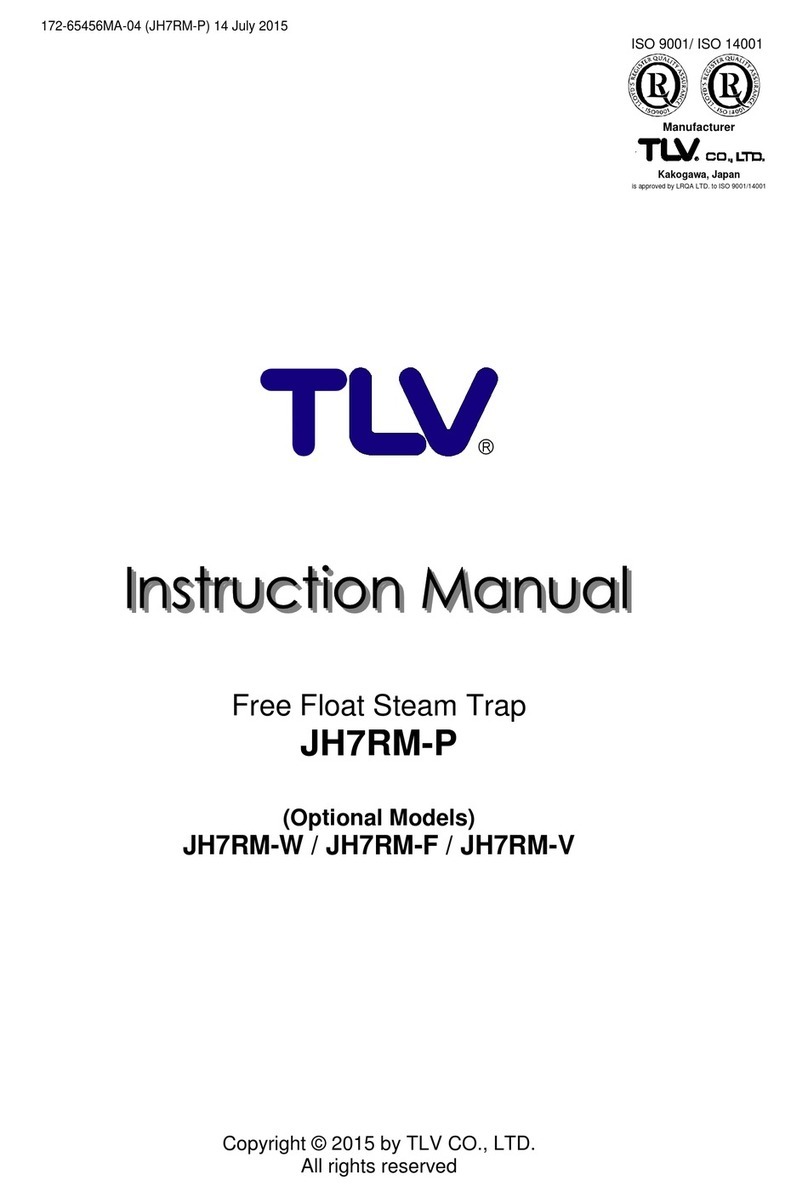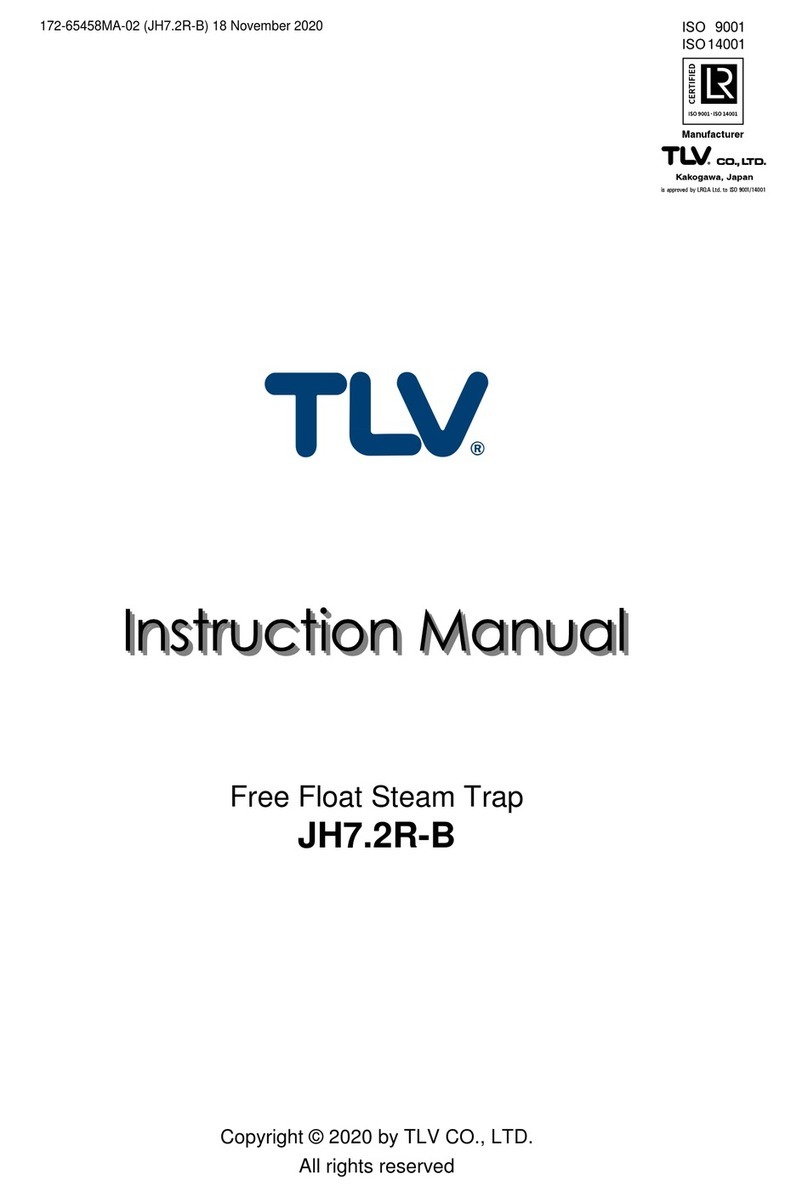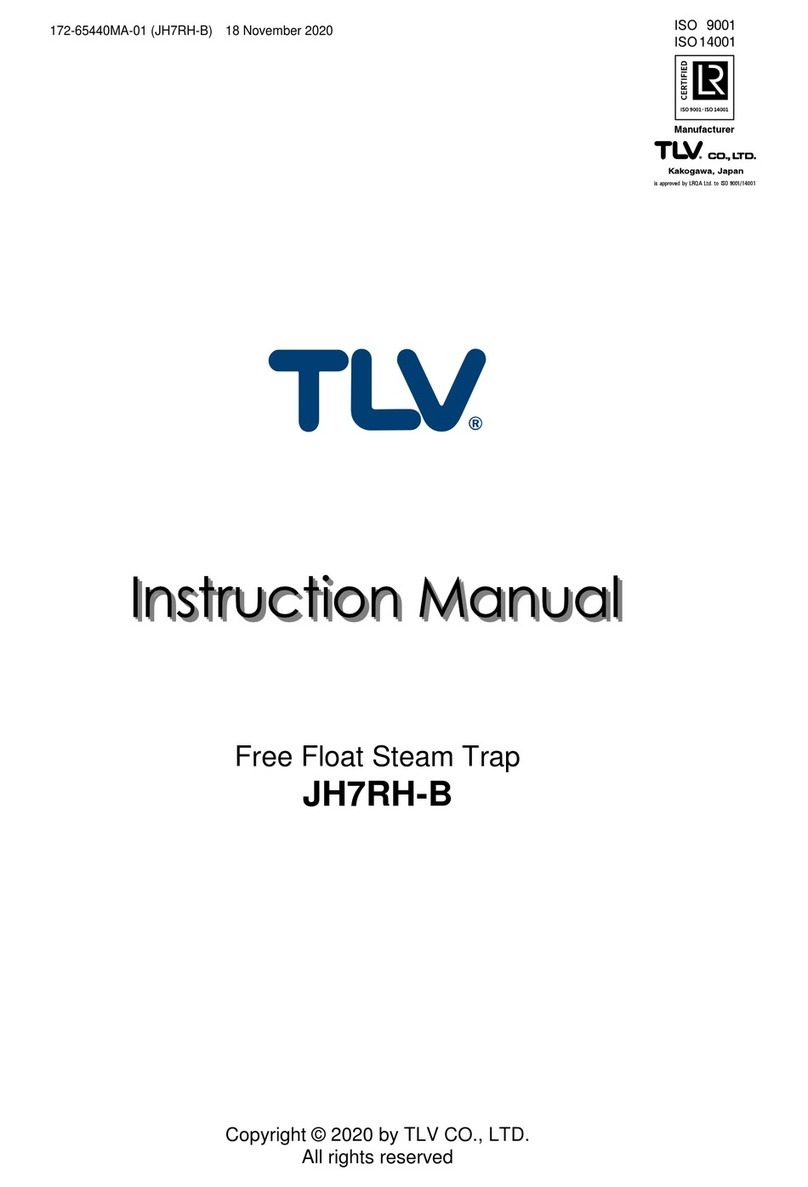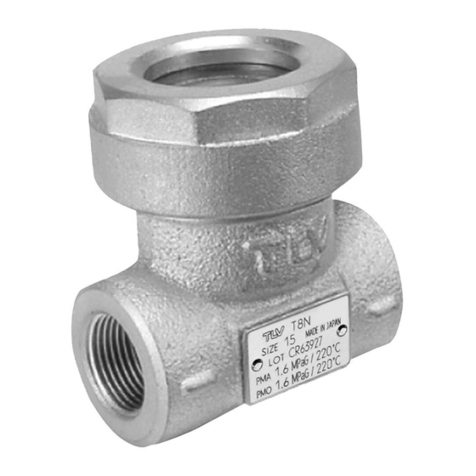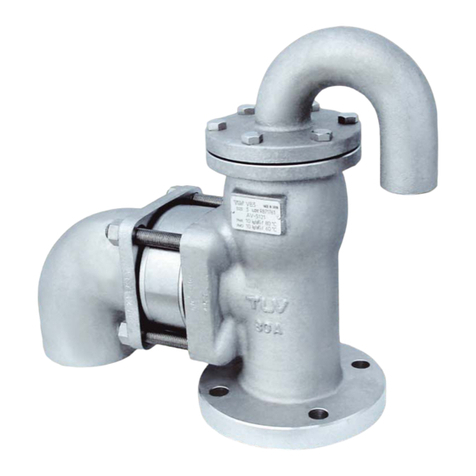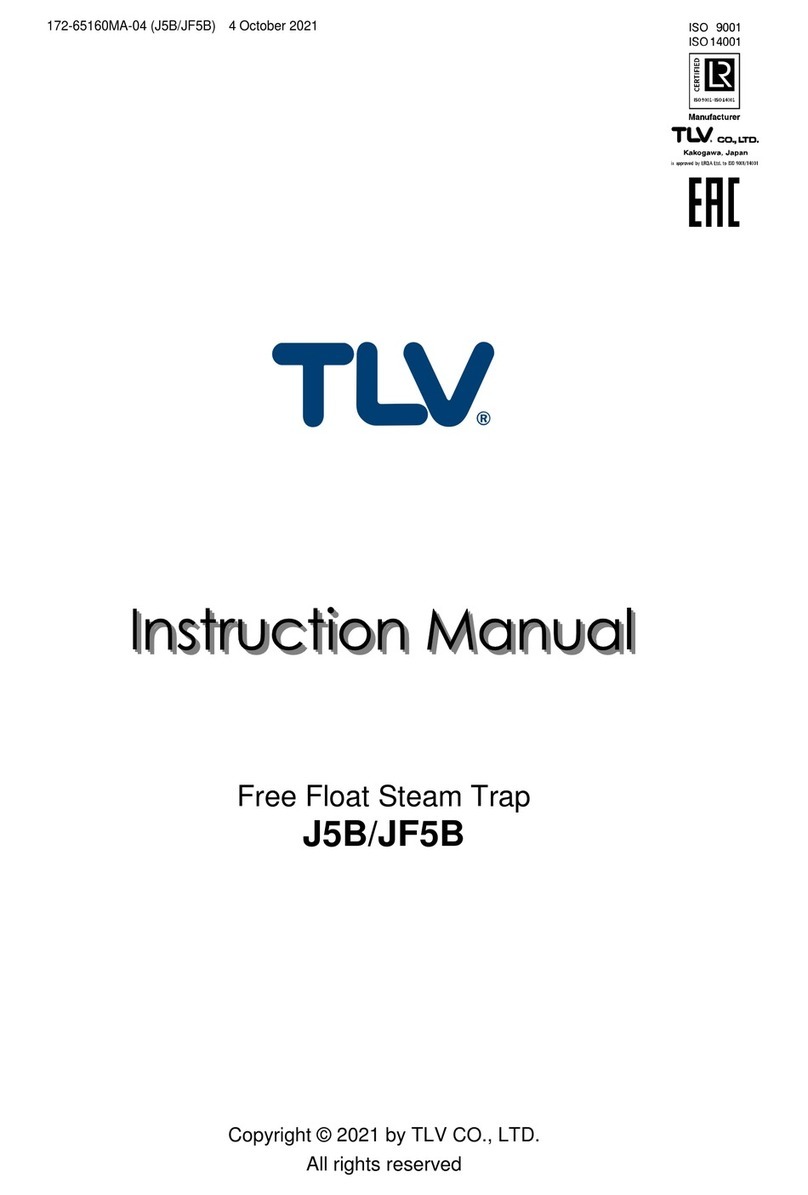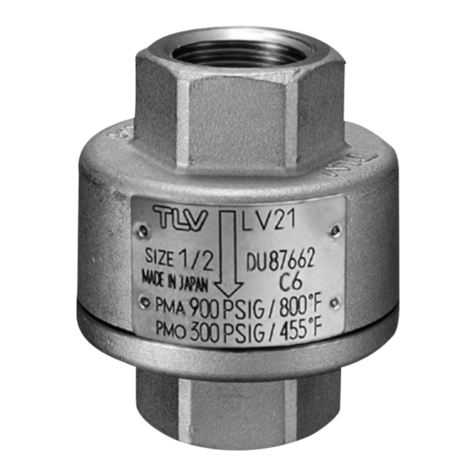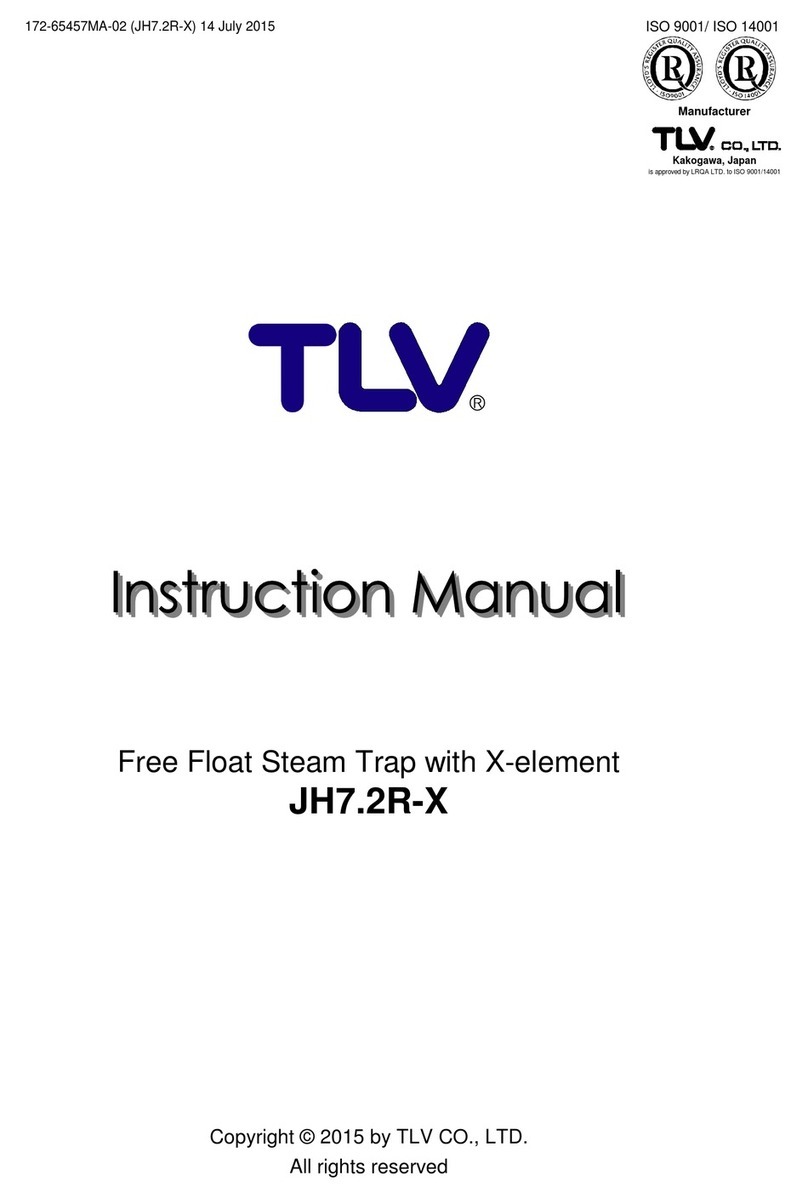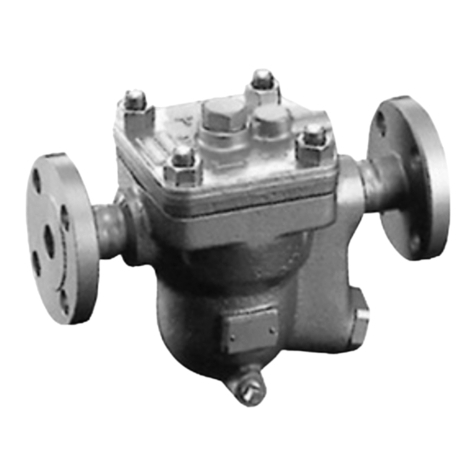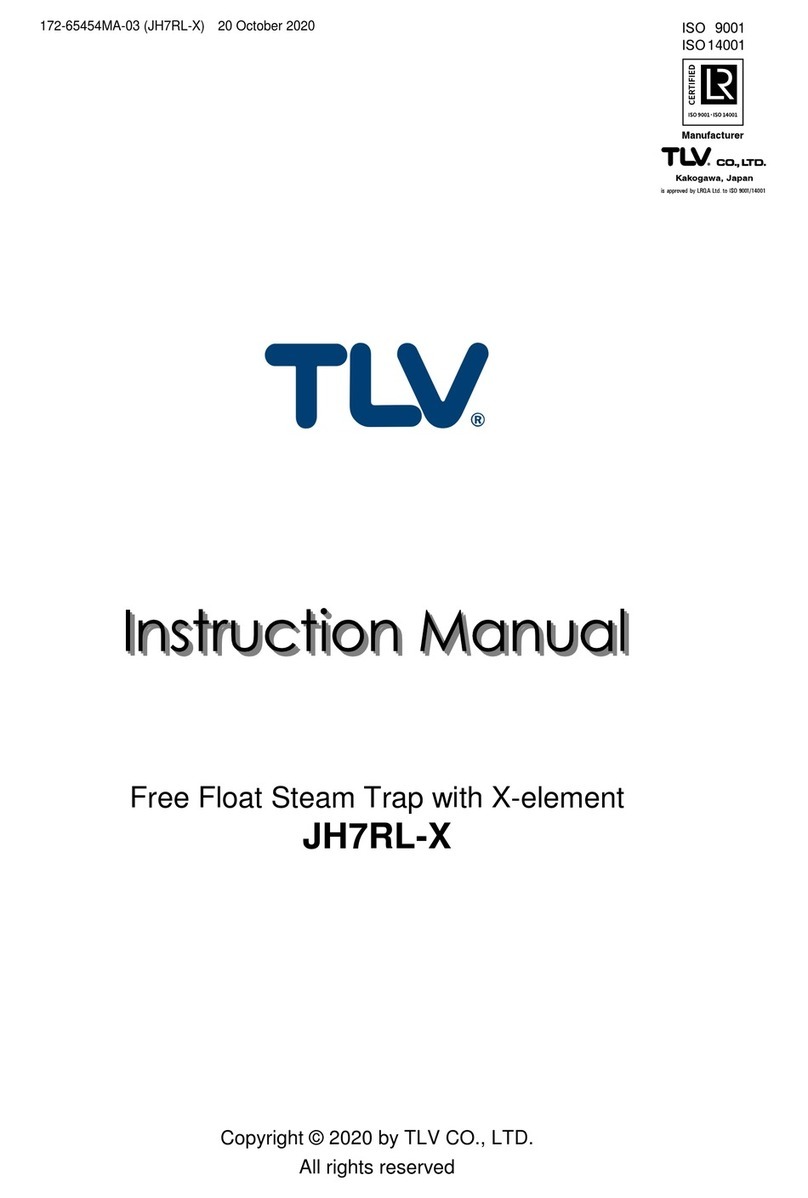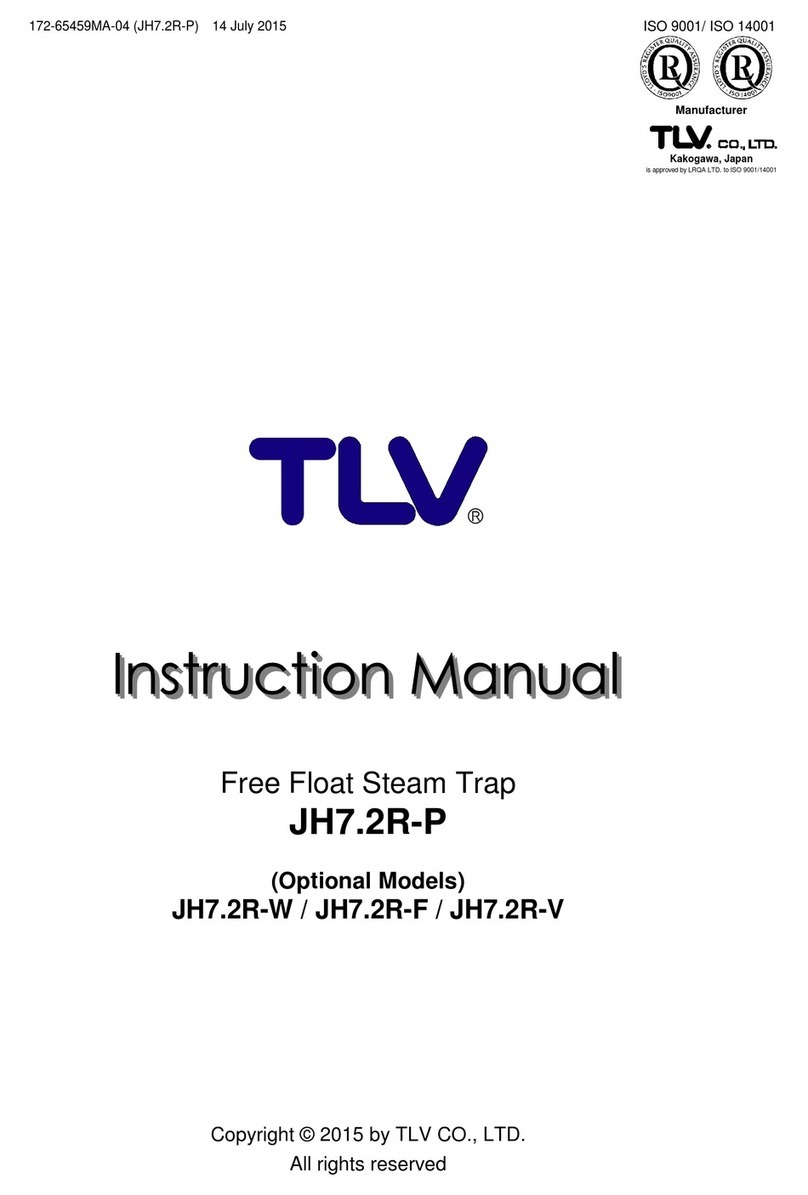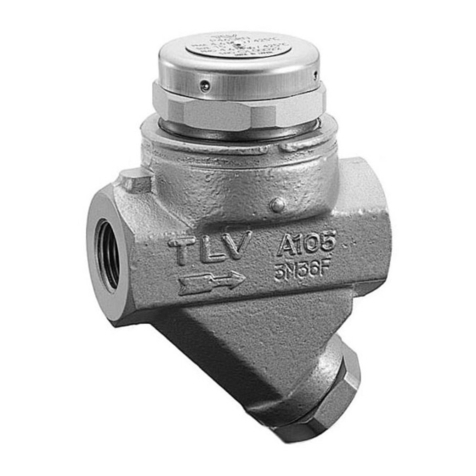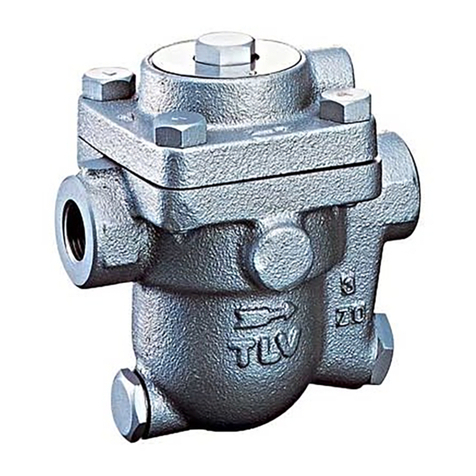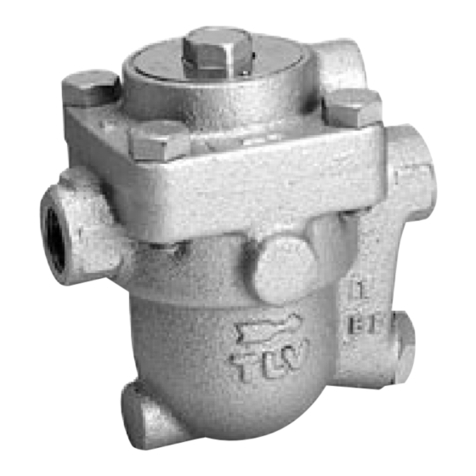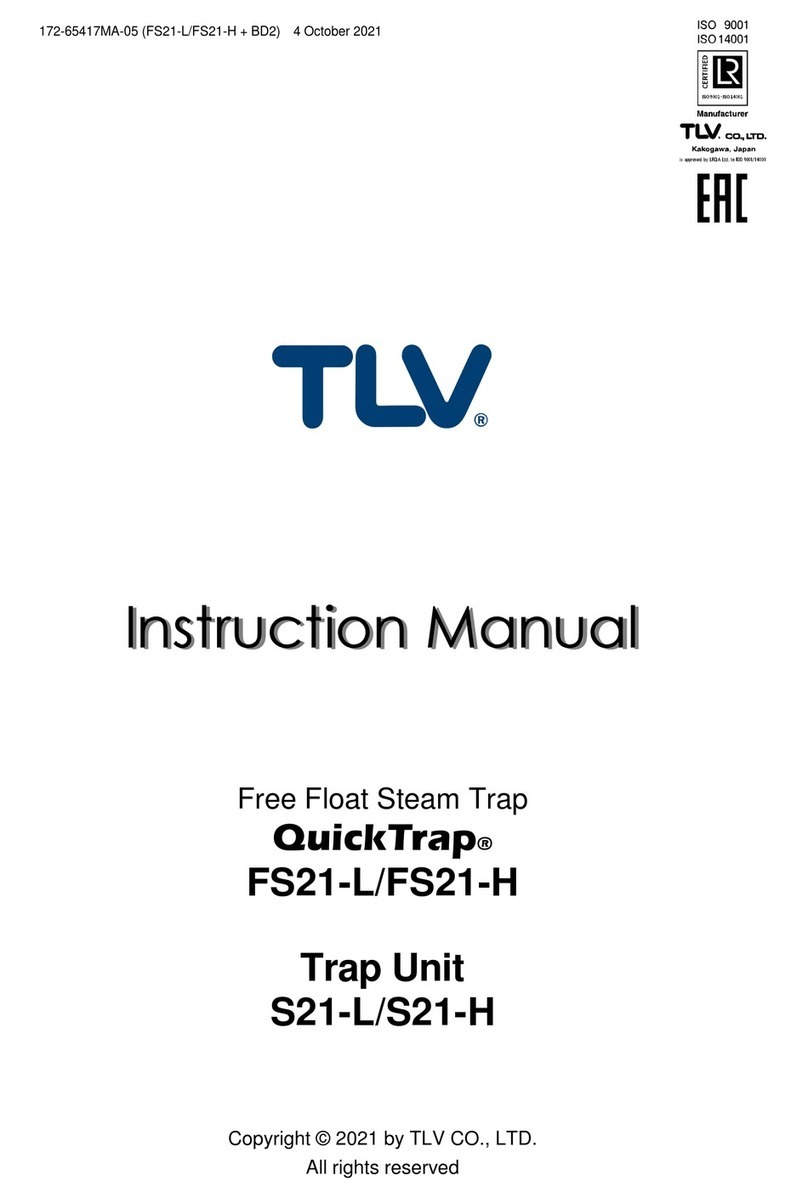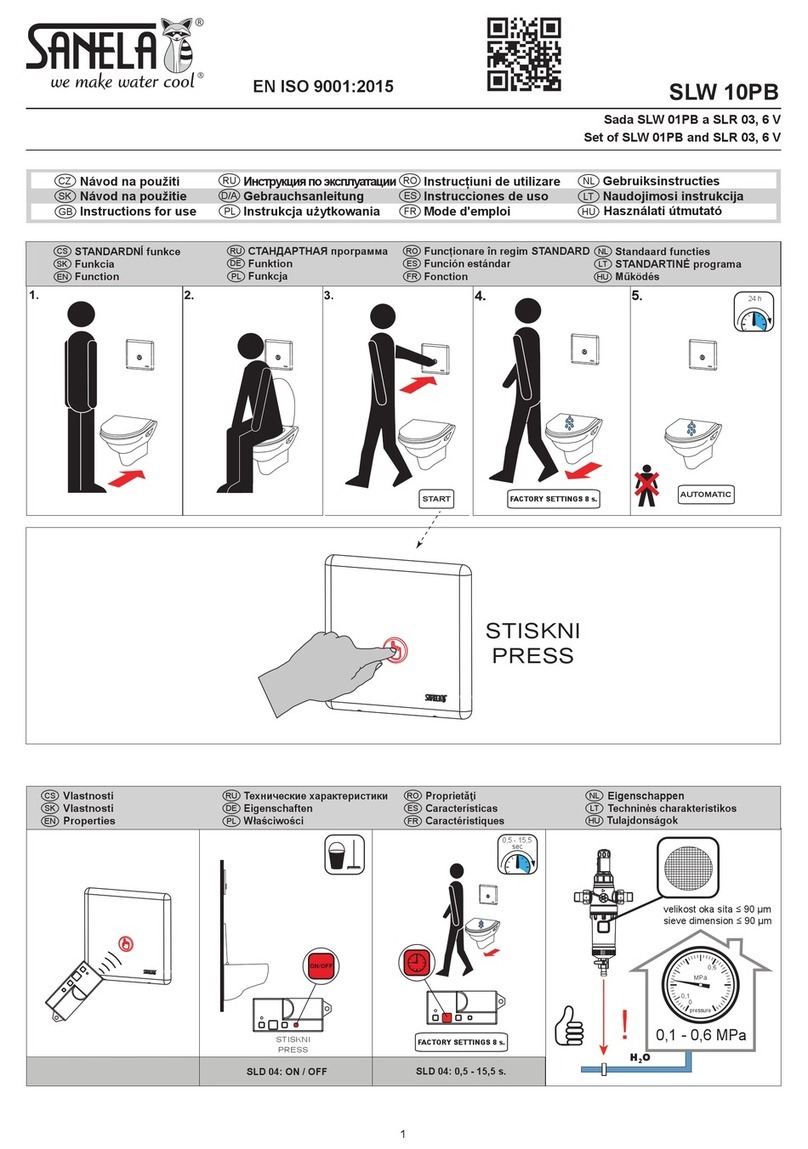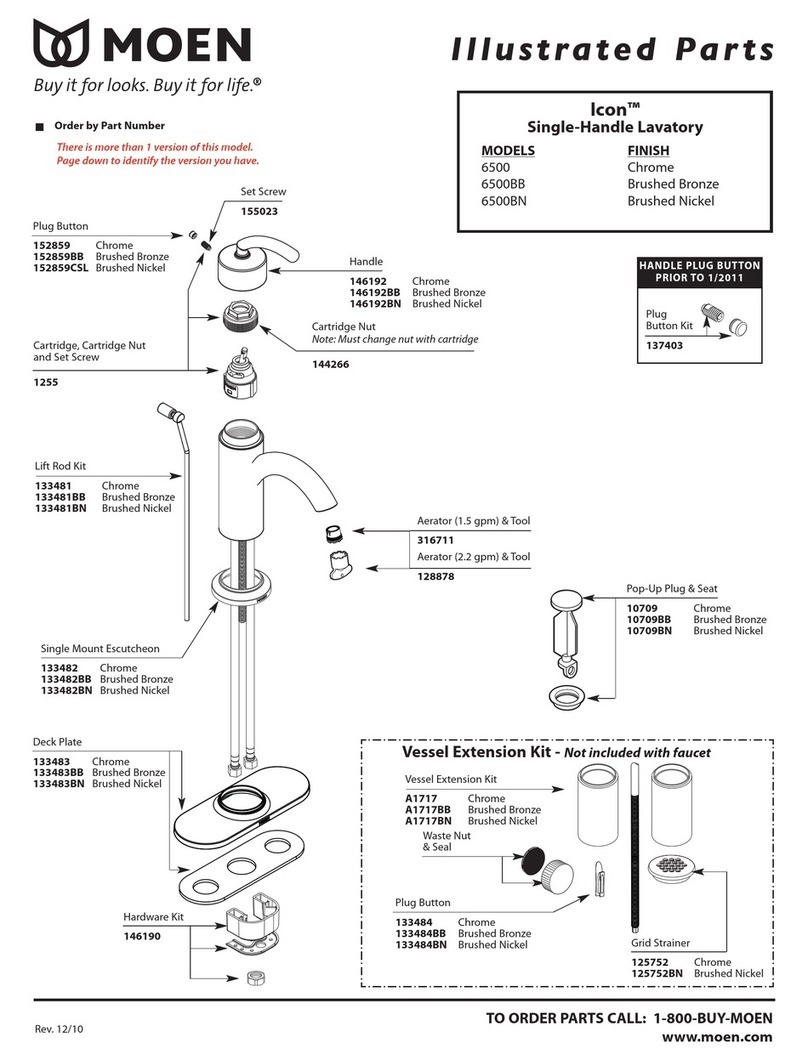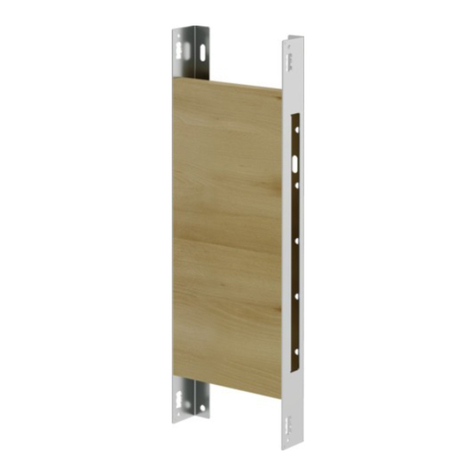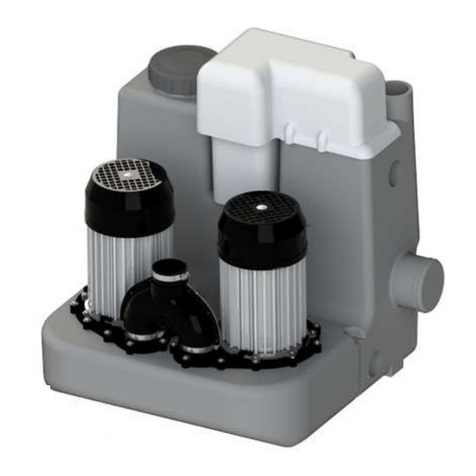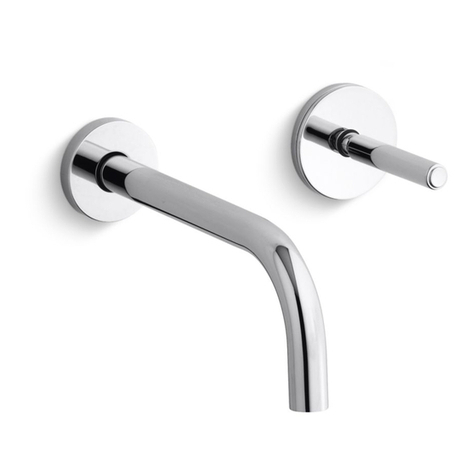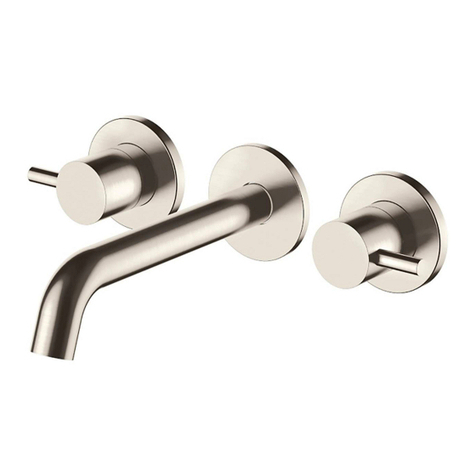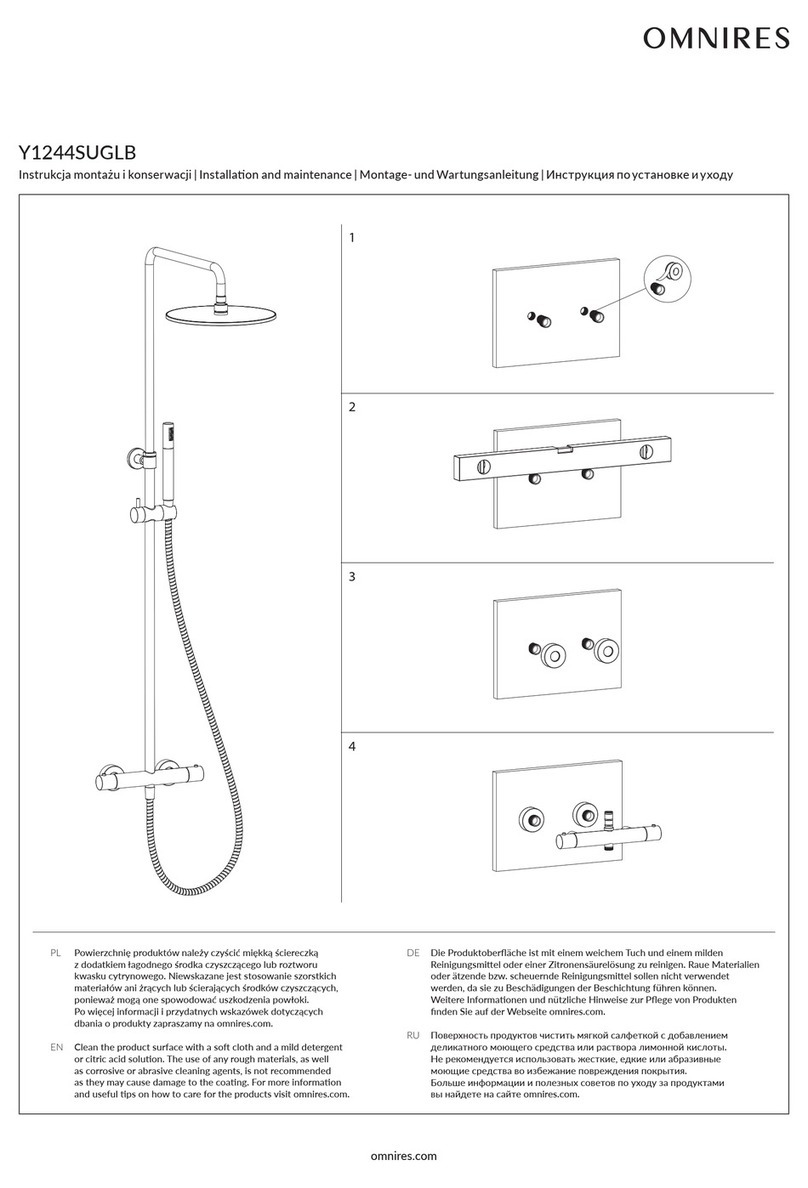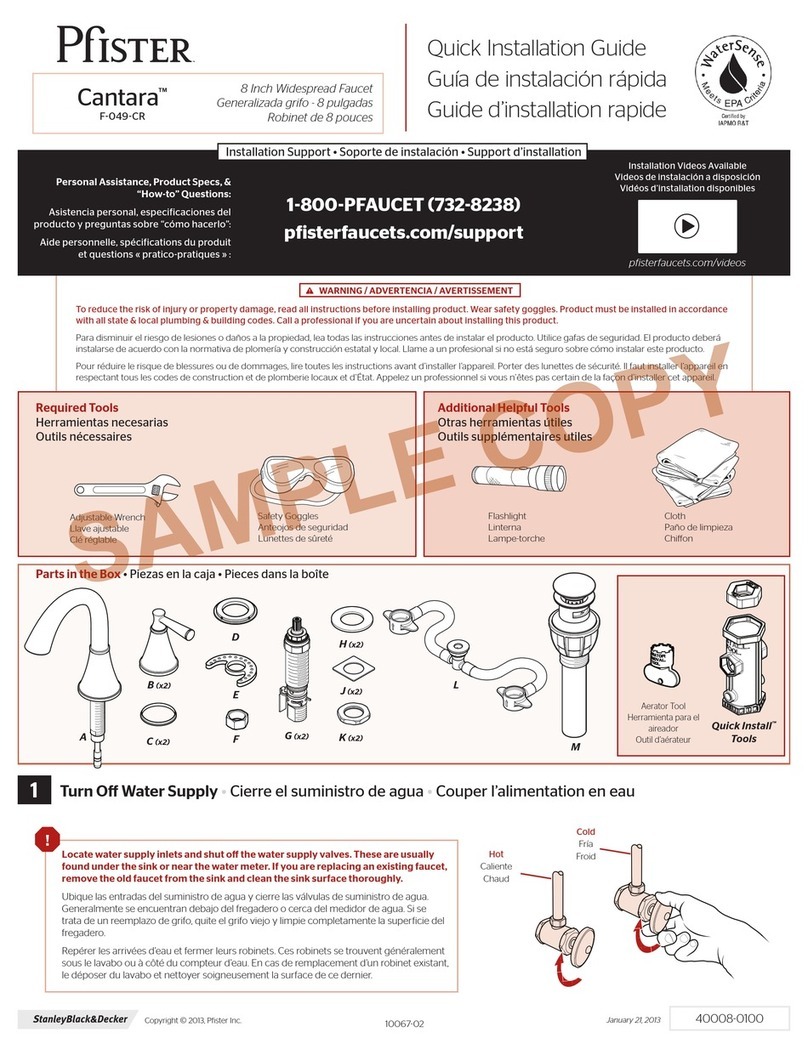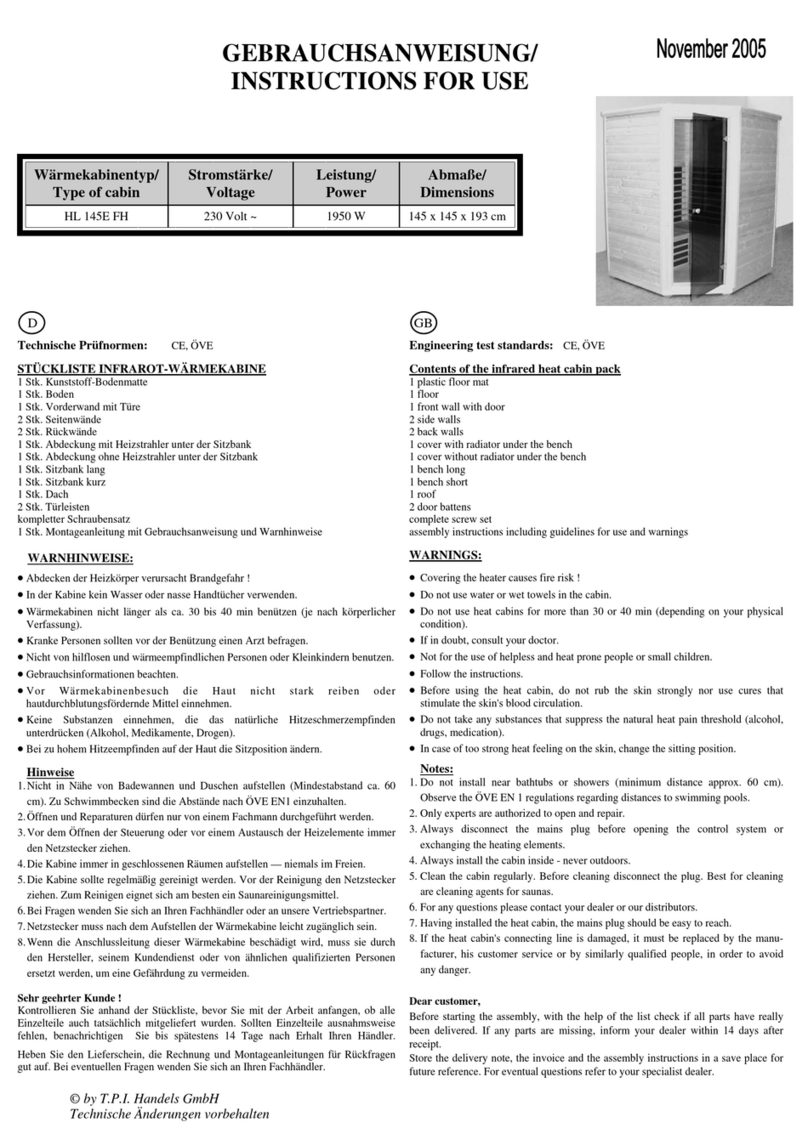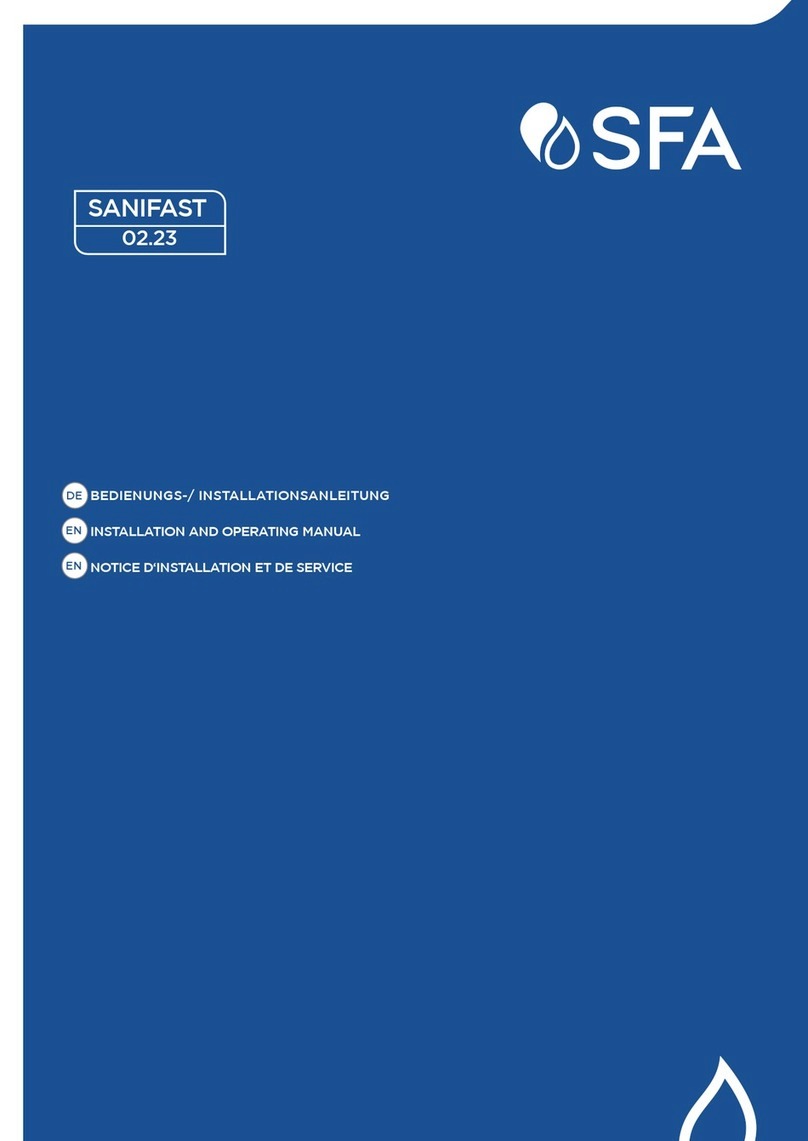TLV ThermoDyne A3N User manual

172-65161MAJ-07 (A3N/AF3N+BD2) 6 October 2021
Thermodynamic Steam Trap
A3N/AF3N
Copyright © 2021 by TLV CO., LTD.
All rights reserved

172-65161MAJ-07 (A3N/AF3N+BD2) 6 Oct 2021
1
Contents
Introduction .......................................................................1
Safety Considerations.......................................................2
Checking the Piping..........................................................4
Operation ..........................................................................5
Specifications....................................................................6
Configuration.....................................................................7
Installation.........................................................................8
Maintenance......................................................................9
Disassembly/Reassembly...............................................10
Troubleshooting ..............................................................11
Product Warranty............................................................12
Options............................................................................15
Introduction
Thank you for purchasing the TLV ThermoDyne thermodynamic steam trap.
This product has been thoroughly inspected before being shipped from the
factory. When the product is delivered, before doing anything else, check the
specifications and external appearance to make sure nothing is out of the
ordinary. Also be sure to read this manual carefully before use and follow the
instructions to be sure of using the product properly.
This ThermoDyne thermodynamic steam trap features a bimetal ring for
thermostatic air venting, which allows the quick, automatic discharge of large
quantities of initial air and cold condensate immediately after operation start-
up, thereby greatly reducing start-up time. The combination of the
ThermoDyne thermodynamic steam trap’s ability to be used without
adjustment throughout the entire rated operating pressure range and the
proven performance record of its built-in bimetal thermostatic air vent offers
reduced manpower requirements for maintenance and bypass blowdown.
If detailed instructions for special order specifications or options not contained
in this manual are required, please contact TLV for full details.
This instruction manual is intended for use with the model(s) listed on the front
cover. It is necessary not only for installation but for subsequent maintenance,
disassembly/reassembly and troubleshooting. Please keep it in a safe place
for future reference.

172-65161MAJ-07 (A3N/AF3N+BD2) 6 Oct 2021
2
Safety Considerations
Read this section carefully before use and be sure to follow the instructions.
Installation, inspection, maintenance, repairs, disassembly, adjustment and valve
opening/closing should be carried out only by trained maintenance personnel.
The precautions listed in this manual are designed to ensure safety and prevent
equipment damage and personal injury. For situations that may occur as a result
of erroneous handling, three different types of cautionary items are used to
indicate the degree of urgency and the scale of potential damage and danger:
DANGER, WARNING and CAUTION.
The three types of cautionary items above are very important for safety: be sure to
observe all of them as they relate to installation, use, maintenance, and repair.
Furthermore, TLV accepts no responsibility for any accidents or damage occurring
as a result of failure to observe these precautions.
Symbols
Indicates a DANGER, WARNING or CAUTION item.
Indicates an urgent situation which poses a threat of death or
serious injury
Indicates that there is a potential threat of death or serious injury
Indicates that there is a possibility of injury or equipment / product
damage
Install properly and DO NOT use this product outside the
recommended operating pressure, temperature and other
specification ranges.
Improper use may result in such hazards as damage to the
product or malfunctions that may lead to serious accidents. Local
regulations may restrict the use of this product to below the
conditions quoted.
Take measures to prevent people from coming into direct
contact with product outlets.
Failure to do so may result in burns or other injury from the
discharge of fluids.
When disassembling or removing the product, wait until the
internal pressure equals atmospheric pressure and the
surface of the product has cooled to room temperature.
Disassembling or removing the product when it is hot or under
pressure may lead to discharge of fluids, causing burns, other
injuries or damage.
Be sure to use only the recommended components when
repairing the product, and NEVER attempt to modify the
product in any way.
Failure to observe these precautions may result in damage to the
product and burns or other injury due to malfunction or the
discharge of fluids.
Continued on the next page.
DANGER
WARNING
CAUTION
CAUTION

172-65161MAJ-07 (A3N/AF3N+BD2) 6 Oct 2021
3
Do not use excessive force when connecting threaded pipes
to the product.
Over-tightening may cause breakage leading to fluid discharge,
which may cause burns or other injury.
Use only under conditions in which no freeze-up will occur.
Freezing may damage the product, leading to fluid discharge,
which may cause burns or other injury.
Use only under conditions in which no water hammer will
occur.
The impact of water hammer may damage the product, leading to
fluid discharge, which may cause burns or other injury.
CAUTION

172-65161MAJ-07 (A3N/AF3N+BD2) 6 Oct 2021
4
Checking the Piping
Use only under conditions in which no water hammer will occur. The
impact of water hammer may damage the product, leading to fluid
discharge, which may cause burns or other injury.
CAUTION
Check to make sure that the pipes to be connected to the product have been
installed properly.
1. Is the pipe diameter suitable?
2. Has sufficient space been secured for maintenance?
3. Have isolation valves been installed at the inlet and outlet? If the outlet is subject
to back pressure, has a check valve (TLV-CK) been installed?
4. Is the inlet pipe as short as possible, with as few bends as possible, and installed
so the liquid will flow naturally down into the product?
5. Has the piping work been done correctly, as shown in the figures below?
Requirement
Correct
Incorrect
Install catchpot with the
proper diameter.
Diameter is too small.
Make sure the flow of
condensate is not
obstructed.
Diameter is too small and
inlet protrudes into pipe
interior.
To prevent rust and scale
from flowing into the trap,
the inlet pipe should be
connected 25 to 50 mm (1
to 2 in) above the base of
the T-pipe.
Rust and scale flow into
the trap with the
condensate.
When installing on the
blind end, make sure the
flow of condensate is not
obstructed.
Condensate collects in the
pipe.

172-65161MAJ-07 (A3N/AF3N+BD2) 6 Oct 2021
5
Operation
Principles of air and condensate discharge:
1. Start-up air and cold condensate discharge
At start-up, the bimetal air vent ring is cold and has
therefore contracted, causing it to ride up the valve
seat skirt to the narrower area under the disc, thus
lifting the disc off the seat and holding the valve
open. This allows for the rapid discharge of initial
air and cold condensate.
2. Steam enters, valve closes
As the bimetal air vent ring is heated by the
entering steam, it expands and slips down the
valve seat skirt, freeing the disc. The rapid flow of
steam creates a low-pressure region under the
disc. The pressure chamber above the disc
becomes a high pressure region when entering
steam is compressed. This difference in the
pressures above and below the disc closes the
valve and provides a tight seal.
3. Condensate discharge
When condensate enters the trap, the temperature
in the pressure chamber drops, causing the steam
to condense and the pressure to drop. The inlet
pressure then pushes up the disc, opening the
valve and allowing condensate to discharge. The
bimetal air vent ring remains in its expanded, low
position state. When steam again enters the trap,
the valve closes, as in step 2, allowing no steam to
escape.
Air
Steam
Condensate

172-65161MAJ-07 (A3N/AF3N+BD2) 6 Oct 2021
6
Specifications
Install properly and DO NOT use this product outside the recommended
operating pressure, temperature and other specification ranges.
Improper use may result in such hazards as damage to the product or
malfunctions which may lead to serious accidents. Local regulations
may restrict the use of this product to below the conditions quoted.
CAUTION
Use only under conditions in which no freeze-up will occur. Freezing
may damage the product, leading to fluid discharge, which may cause
burns or other injury.
CAUTION
Refer to the product nameplate for detailed specifications.
Minimum Operating Pressure: 0.03 MPaG (5 psig)
Maximum Allowable Back Pressure: 50% of the inlet pressure
* Maximum allowable pressure (PMA) and maximum allowable temperature (TMA) are PRESSURE
SHELL DESIGN CONDITIONS, NOT OPERATING CONDITIONS.
** Valve No. is displayed for products with options. This item is omitted from the nameplate when there
are no options.
Model
Production Lot No.
Maximum Allowable
Temperature (TMA)*
Maximum Operating
Temperature (TMO)
Nominal Diameter
Maximum Allowable
Pressure*
Maximum Operating
Pressure
Valve No.**

172-65161MAJ-07 (A3N/AF3N+BD2) 6 Oct 2021
7
Configuration
A3NAF3N (15 –25 mm / 1/2–1 in)
No.
Name
M*
R*
1
Body
2
Outer Cover Gasket
3
Inner Cover Gasket**
Outer Module Gasket***
4
Inner Module Gasket***
5
Module Valve Seat
6
Disc
7
Inner Cover
8
Air Vent Ring
9
Module Pin
10
Outer Cover
11
Screen
12
Screen Holder Gasket
13
Screen Holder
14
Disc Holder Ring
*Replacement parts are available only in
the following kits:
M = Maintenance Kit; R = Repair Kit
**Integral part of inner cover
***Integral part of module valve seat
A3N AF3N (32 –50 mm / 11/4–2 in)
No.
Name
M*
R*
1
Body
2
Outer Cover Gasket
3
Inner Cover Gasket**
Outer Module Gasket***
4
Inner Module Gasket***
5
Module Valve Seat
6
Disc
7
Inner Cover
8
Air Vent Ring
9
Module Pin
10
Outer Cover
11
Screen
12
Screen Holder Gasket
13
Screen Holder
14
Disc Holder Ring
15
Outer Cover Bolt
16
Nameplate
*Replacement parts are available only in
the following kits:
M = Maintenance Kit; R = Repair Kit
**Integral part of inner cover
***Integral part of module valve seat

172-65161MAJ-07 (A3N/AF3N+BD2) 6 Oct 2021
8
Installation
Install properly and DO NOT use this product outside the recommended
operating pressure, temperature and other specification ranges.
Improper use may result in such hazards as damage to the product or
malfunctions which may lead to serious accidents. Local regulations
may restrict the use of this product to below the conditions quoted.
CAUTION
Take measures to prevent people from coming into direct contact with
product outlets. Failure to do so may result in burns or other injury from
the discharge of fluids.
CAUTION
Do not use excessive force when connecting threaded pipes to the
product. Over-tightening may cause breakage leading to fluid
discharge, which may cause burns or other injury.
CAUTION
Installation, inspection, maintenance, repairs, disassembly, adjustment and valve
opening/closing should be carried out only by trained maintenance personnel.
1. Before installation, be sure to remove all protective seals.
2. Before installing the product, open the inlet valve and blow out the piping to
remove any piping scraps, dirt and oil. Close the inlet valve after blowdown.
3. Install the product so the arrow on the body is pointing in the direction of flow.
4. The product may be installed either horizontally or vertically; there are no
restrictions on the orientation of installation. (Fix the product securely in place.)
5. Install a condensate outlet valve and outlet piping. Make sure that the outlet piping
is large enough to prevent occurrence of excessive backpressure.
(Backpressure must not exceed 50% of the inlet steam pressure.)
6. Open the inlet and outlet valves and check to make sure that the product functions
properly.
If there is a problem, determine the cause using the “Troubleshooting” section in this
manual.

172-65161MAJ-07 (A3N/AF3N+BD2) 6 Oct 2021
9
Maintenance
Take measures to prevent people from coming into direct contact with
product outlets. Failure to do so may result in burns or other injury from
the discharge of fluids.
CAUTION
Be sure to use only the recommended components when repairing the
product, and NEVER attempt to modify the product in any way. Failure to
observe these precautions may result in damage to the product or burns
or other injury due to malfunction or the discharge of fluids.
CAUTION
Operational Check
A visual inspection of the following items should be done on a daily basis to
determine whether the product is operating properly or has failed. Periodically (at
least biannually) the operation should also be checked by using diagnostic
equipment, such as a stethoscope, thermometer, TLV TrapMan or TLV Pocket
TrapMan.
If the product should fail, it may cause damage to piping and equipment, resulting in
faulty or low quality products or losses due to steam leakage.
Normal
:
Condensate is discharged intermittently together with flash
steam, and the sound of flow can be heard.
Blocked
(Discharge Impossible)
:
No condensate is discharged. The product is quiet and makes
no noise, and the surface temperature of the product is low.
Blowing
:
Live steam continually flows from the outlet and there is a
continuous metallic sound.
Steam Leakage
:
Live steam is discharged through the product outlet together with
condensate, accompanied by a high-pitched sound.
(When conducting a visual inspection, flash steam is sometimes mistaken for steam
leakage. For this reason, the use of a steam trap diagnostic instrument [TLV:
TrapMan] in conjunction with the visual inspection is highly recommended.)
Parts Inspection
When parts have been removed, or during periodic inspections, use the following
table to inspect the parts and replace any that are found to be defective.
Procedure
Gaskets: Check for warping or scratches
Screen: Check for clogging or corrosion
Disc: Check for scratches or wear
Air Vent Ring: Check for scratches or wear
Disc Holder Ring: Check for scratches or wear
Module Valve Seat Surface: Check for scratches or wear
Groove for Module Valve Seat: Check for build-up
Check for build-up inside the body
White jet
containing water
droplets
Clear, slightly
bluish jet
Flash Steam
Live Steam Leakage

172-65161MAJ-07 (A3N/AF3N+BD2) 6 Oct 2021
10
Disassembly/Reassembly
When disassembling or removing the product, wait until the internal
pressure equals atmospheric pressure and the surface of the product
has cooled to room temperature. Disassembling or removing the
product when it is hot or under pressure may lead to discharge of fluids,
causing burns, other injuries or damage.
CAUTION
Use the following procedures to remove components. Use the same procedures in
reverse to reassemble.
(Installation, inspection, maintenance, repairs, disassembly, adjustment and valve
opening/closing should be carried out only by trained maintenance personnel.)
Removing/Reattaching the Outer Cover
Part
During Disassembly
During Reassembly
Outer Cover
15-25 mm (1/2–1 in): Remove the
cover with a wrench
32-50 mm (11/4–2 in): Remove the
cover bolt with a socket wrench and
detach the cover
Consult the table of tightening torques and
tighten to the proper torque
Outer Cover
Gasket
Remove the gasket and clean sealing
surfaces
Replace with a new gasket if damaged
Removing/Reattaching the Inner Cover and its Components
Part
During Disassembly
During Reassembly
Inner Cover
Remove with a socket wrench
Consult the table of tightening torques and
tighten to the proper torque
Inner Cover
Gasket
Do not remove
If the gasket is damaged, replace inner
cover
Disc
Remove, being careful not to scratch
the lapped surface
Make sure that the seat surface (lapped side
with groove) is facing down, toward the
valve seat
Disc Holder Ring
Remove without bending, as it will not
return to its proper shape
Set on the air vent ring and make sure that it
does not sit on the valve seat surface
Air Vent Ring
Remove without bending
Reinsert without bending
Module Valve
Seat
Remove carefully, being careful not to
scratch the polished seat surface
Insert into the body levelly, aligning on
module pin and being careful not to tilt it or
to scratch the seat surface
Module Pin
—
—
Module Gaskets
Do not remove
If any of the gaskets are damaged, replace
module valve seat
Disassembly/Reassembly of Components Inside the Body
Part
During Disassembly
During Reassembly
Screen Holder
Remove with a socket wrench
Consult the table of tightening torques and
tighten to the proper torque
Screen Holder
Gasket
Remove the gasket and clean sealing
surfaces
15-25 mm (1/2–1 in): Replace with a new
gasket if damaged
32-50 mm (11/4–2 in): Replace with a new
gasket; coat surfaces with anti-seize
Screen
Remove without bending
Reinsert without bending
Table of Tightening Torques
A3N/AF3N: 15 –25 mm (1/2–1 in)
A3N/AF3N: 32 –50 mm (11/4–2 in)
Part Name
Torque
Distance Across
Flats
Torque
Distance Across
Flats
N∙m
(lbf∙ft)
mm
(in)
N∙m
(lbf∙ft)
mm
(in)
Outer Cover
220
(160)
71
(213/16)
―
―
―
―
Outer Cover Bolt
―
―
―
―
50
(37)
16
(5/8)
Inner Cover
220
(160)
46
(113/16)
400
(290)
75
(215/16)
Screen Holder
80
(59)
38
(11/2)
300
(220)
54
(21/8)
NOTE:
-Coat all threaded portions with anti-seize.
-If drawings or other special documentation were supplied for the product,
any torque given there takes precedence over values shown here.
(1 Nm 10 kgcm)

172-65161MAJ-07 (A3N/AF3N+BD2) 6 Oct 2021
11
Troubleshooting
When disassembling or removing the product, wait until the internal
pressure equals atmospheric pressure and the surface of the product
has cooled to room temperature. Disassembling or removing the
product when it is hot or under pressure may lead to discharge of fluids,
causing burns, other injuries or damage.
CAUTION
When the product fails to operate properly, use the following table to locate and
remedy the cause.
Problem
Cause
Remedy
No
condensate
is discharged
(blocked) or
discharge is
poor
Module valve seat, screen or piping
are clogged with rust or scale
Clean parts
Disc is stuck to the module valve seat
Clean parts
Air binding has occurred
Perform a bypass blowdown, or close
the inlet valve and allow the trap to
cool
Air binding due to disc holder ring or
air vent ring wear
Replace with a new disc holder ring or
air vent ring
Steam-locking has occurred
Perform a bypass blowdown, or close
the inlet valve and allow the trap to
cool. Piping correction may also be
required.
The product operating pressure
exceeds the maximum specified
pressure or there is insufficient
pressure differential between the
product inlet and outlet
Compare specifications and actual
operating conditions
The product capacity is insufficient
Replace with a trap of suitable capacity
Steam is
discharged or
leaks from
the outlet
(blowing)
(steam
leakage)
Rust or scale on the disc or on the
module valve seat
Clean parts
Disc and the module valve seat
damage or wear
Replace with a new disc or module
valve seat
Improper installation
Correct the installation
Gasket deterioration or damage
Replace module valve seat
Trap vibration
Lengthen the inlet piping and fasten
itsecurely
Inner cover is loose
Tighten to the correct torque
The product operating pressure is less
than the minimum specified pressure
or the back pressure exceeds the
allowable back pressure
Compare specifications and actual
operating conditions
Inlet and discharge channels may be
connected due to erosion
Replace with a new trap (study trap
capacity)
Steam leaks
from a place
other than the
outlet
Gasket deterioration or damage
Replace with a new module valve seat
Improper tightening torques were used
Tighten to the proper torque
NOTE: When replacing parts with new, use the parts list for reference, and replace with parts
from the maintenance kit, repair kit, etc. Please note that replacement parts are only
available as part of a replacement parts kit.

172-65161MAJ-07 (A3N/AF3N+BD2) 6 Oct 2021
12
TLV EXPRESS LIMITED WARRANTY
Subject to the limitations set forth below, TLV CO., LTD., a Japanese corporation
(“TLV”), warrants that products which are sold by it, TLV International Inc. (“TII”) or
one of its group companies excluding TLV Corporation (a corporation of the United
States of America), (hereinafter the “Products”) are designed and manufactured by
TLV, conform to the specifications published by TLV for the corresponding part
numbers (the “Specifications”) and are free from defective workmanship and
materials. The party from whom the Products were purchased shall be known
hereinafter as the “Seller”. With regard to products or components manufactured by
unrelated third parties (the “Components”), TLV provides no warranty other than the
warranty from the third party manufacturer(s), if any.
Exceptions to Warranty
This warranty does not cover defects or failures caused by:
1. improper shipping, installation, use, handling, etc., by persons other than TLV, TII
or TLV group company personnel, or service representatives authorized by TLV;
or
2. dirt, scale or rust, etc.; or
3. improper disassembly and reassembly, or inadequate inspection and
maintenance by persons other than TLV or TLV group company personnel, or
service representatives authorized by TLV; or
4. disasters or forces of nature or Acts of God; or
5. abuse, abnormal use, accidents or any other cause beyond the control of TLV,
TII or TLV group companies; or
6. improper storage, maintenance or repair; or
7. operation of the Products not in accordance with instructions issued with the
Products or with accepted industry practices; or
8. use for a purpose or in a manner for which the Products were not intended; or
9. use of the Products in a manner inconsistent with the Specifications; or
10. use of the Products with Hazardous Fluids (fluids other than steam, air, water,
nitrogen, carbon dioxide and inert gases (helium, neon, argon, krypton, xenon
and radon)); or
11. failure to follow the instructions contained in the TLV Instruction Manual for the
Product.
Duration of Warranty
This warranty is effective for a period of one (1) year after delivery of Products to the
first end user. Notwithstanding the foregoing, asserting a claim under this warranty
must be brought within three (3) years after the date of delivery to the initial buyer if
not sold initially to the first end user.
ANY IMPLIED WARRANTIES NOT NEGATED HEREBY WHICH MAY ARISE BY
OPERATION OF LAW, INCLUDING THE IMPLIED WARRANTIES OF MERCHANTABILITY
AND FITNESS FOR A PARTICULAR PURPOSE AND ANY EXPRESS WARRANTIES NOT
NEGATED HEREBY, ARE GIVEN SOLELY TO THE INITIAL BUYER AND ARE LIMITED IN
DURATION TO ONE (1) YEAR FROM THE DATE OF SHIPMENT BY THE SELLER.
Exclusive Remedy
THE EXCLUSIVE REMEDY UNDER THIS WARRANTY, UNDER ANY EXPRESS
WARRANTY OR UNDER ANY IMPLIED WARRANTIES NOT NEGATED HEREBY
(INCLUDING THE IMPLIED WARRANTIES OF MERCHANTABILITY AND FITNESS FOR A
PARTICULAR PURPOSE), IS REPLACEMENT; PROVIDED: (a) THE CLAIMED DEFECT IS

172-65161MAJ-07 (A3N/AF3N+BD2) 6 Oct 2021
13
REPORTED TO THE SELLER IN WRITING WITHIN THE WARRANTY PERIOD,
INCLUDING A DETAILED WRITTEN DESCRIPTION OF THE CLAIMED DEFECT AND
HOW AND WHEN THE CLAIMED DEFECTIVE PRODUCT WAS USED; AND (b) THE
CLAIMED DEFECTIVE PRODUCT AND A COPY OF THE PURCHASE INVOICE IS
RETURNED TO THE SELLER, FREIGHT AND TRANSPORTATION COSTS PREPAID,
UNDER A RETURN MATERIAL AUTHORIZATION AND TRACKING NUMBER ISSUED BY
THE SELLER. ALL LABOR COSTS, SHIPPING COSTS, AND TRANSPORTATION COSTS
ASSOCIATED WITH THE RETURN OR REPLACEMENT OF THE CLAIMED DEFECTIVE
PRODUCT ARE SOLELY THE RESPONSIBILITY OF BUYER OR THE FIRST END USER.
THE SELLER RESERVES THE RIGHT TO INSPECT ON THE FIRST END USER’S SITE
ANY PRODUCTS CLAIMED TO BE DEFECTIVE BEFORE ISSUING A RETURN MATERIAL
AUTHORIZATION. SHOULD SUCH INSPECTION REVEAL, IN THE SELLER’S
REASONABLE DISCRETION, THAT THE CLAIMED DEFECT IS NOT COVERED BY THIS
WARRANTY, THE PARTY ASSERTING THIS WARRANTY SHALL PAY THE SELLER FOR
THE TIME AND EXPENSES RELATED TO SUCH ON-SITE INSPECTION.
Exclusion of Consequential and Incidental Damages
IT IS SPECIFICALLY ACKNOWLEDGED THAT THIS WARRANTY, ANY OTHER EXPRESS
WARRANTY NOT NEGATED HEREBY, AND ANY IMPLIED WARRANTY NOT NEGATED
HEREBY, INCLUDING THE IMPLIED WARRANTIES OF MERCHANTABILITY AND
FITNESS FOR A PARTICULAR PURPOSE, DO NOT COVER, AND NEITHER TLV, TII NOR
ITS TLV GROUP COMPANIES WILL IN ANY EVENT BE LIABLE FOR, INCIDENTAL OR
CONSEQUENTIAL DAMAGES, INCLUDING, BUT NOT LIMITED TO LOST PROFITS, THE
COST OF DISASSEMBLY AND SHIPMENT OF THE DEFECTIVE PRODUCT, INJURY TO
OTHER PROPERTY, DAMAGE TO BUYER’S OR THE FIRST END USER’S PRODUCT,
DAMAGE TO BUYER’S OR THE FIRST END USER’S PROCESSES, LOSS OF USE, OR
OTHER COMMERCIAL LOSSES. WHERE, DUE TO OPERATION OF LAW,
CONSEQUENTIAL AND INCIDENTAL DAMAGES UNDER THIS WARRANTY, UNDER ANY
OTHER EXPRESS WARRANTY NOT NEGATED HEREBY OR UNDER ANY IMPLIED
WARRANTY NOT NEGATED HEREBY (INCLUDING THE IMPLIED WARRANTIES OF
MERCHANTABILITY AND FITNESS FOR A PARTICULAR PURPOSE) CANNOT BE
EXCLUDED, SUCH DAMAGES ARE EXPRESSLY LIMITED IN AMOUNT TO THE
PURCHASE PRICE OF THE DEFECTIVE PRODUCT. THIS EXCLUSION OF
CONSEQUENTIAL AND INCIDENTAL DAMAGES, AND THE PROVISION OF THIS
WARRANTY LIMITING REMEDIES HEREUNDER TO REPLACEMENT, ARE
INDEPENDENT PROVISIONS, AND ANY DETERMINATION THAT THE LIMITATION OF
REMEDIES FAILS OF ITS ESSENTIAL PURPOSE OR ANY OTHER DETERMINATION
THAT EITHER OF THE ABOVE REMEDIES IS UNENFORCEABLE, SHALL NOT BE
CONSTRUED TO MAKE THE OTHER PROVISIONS UNENFORCEABLE.
Exclusion of Other Warranties
THIS WARRANTY IS IN LIEU OF ALL OTHER WARRANTIES, EXPRESS OR IMPLIED,
AND ALL OTHER WARRANTIES, INCLUDING BUT NOT LIMITED TO THE IMPLIED
WARRANTIES OF MERCHANTABILITY AND FITNESS FOR A PARTICULAR PURPOSE,
ARE EXPRESSLY DISCLAIMED.
Severability
Any provision of this warranty which is invalid, prohibited or unenforceable in any
jurisdiction shall, as to such jurisdiction, be ineffective to the extent of such invalidity,
prohibition or unenforceability without invalidating the remaining provisions hereof,
and any such invalidity, prohibition or unenforceability in any such jurisdiction shall
not invalidate or render unenforceable such provision in any other jurisdiction.

172-65161MAJ-07 (A3N/AF3N+BD2) 6 Oct 2021
14
Service
For Service or Technical Assistance: Contact your TLV representative or your regional
TLV office.
In Europe:
Daimler-Benz-Straße 16-18, 74915 Waibstadt, Germany
Tel:
Fax:
[49]-(0)7263-9150-0
[49]-(0)7263-9150-50
Units 7 & 8, Furlong Business Park, Bishops Cleeve, Gloucestershire GL52
8TW, U.K.
Tel:
Fax:
[44]-(0)1242-227223
[44]-(0)1242-223077
Parc d’Ariane 2, bât. C, 290 rue Ferdinand Perrier, 69800 Saint Priest,
France
Tel:
Fax:
[33]–(0)4-72482222
[33]-(0)4-72482220
In North America:
13901 South Lakes Drive, Charlotte, NC 28273-6790, U.S.A.
Tel:
Fax:
[1]-704-597-9070
[1]-704-583-1610
In Mexico and Latin America:
Av. Jesús del Monte 39-B-1001, Col. Hda. de las Palmas, Huixquilucan,
Edo. de México, 52763, Mexico
Tel:
Fax:
[52]-55-5359-7949
[52]-55-5359-7585
In Oceania:
Unit 8, 137-145 Rooks Road, Nunawading, Victoria 3131, Australia
Tel:
Fax:
[61]-(0)3-9873 5610
[61]-(0)3-9873 5010
In East Asia:
36 Kaki Bukit Place, #02-01/02, Singapore 416214
Tel:
Fax:
[65]-6747 4600
[65]-6742 0345
Room 5406, No. 103 Cao Bao Road, Shanghai, China 200233
Tel:
Fax:
[86]-(0)21-6482-8622
[86]-(0)21-6482-8623
No.16, Jalan MJ14, Taman Industri Meranti Jaya, 47120 Puchong,
Selangor, Malaysia
Tel:
Fax:
[60]-3-8065-2928
[60]-3-8065-2923
252/94 (K-L) 17th Floor, Muang Thai-Phatra Complex Tower B,
Rachadaphisek Road, Huaykwang, Bangkok 10310, Thailand
Tel:
Fax:
[66]-2-693-3799
[66]-2-693-3979
#302-1 Bundang Technopark B, 723 Pangyo-ro, Bundang, Seongnam,
Gyeonggi, 13511, Korea
Tel:
Fax:
[82]-(0)31-726-2105
[82]-(0)31-726-2195
In the Middle East:
Building 2W, No. M002, PO Box 371684, Dubai Airport Free Zone, Dubai,
UAE
Email:
In Other Countries:
881 Nagasuna, Noguchi, Kakogawa, Hyogo 675-8511, Japan
Tel:
Fax:
[81]-(0)79-427-1818
[81]-(0)79-425-1167
Manufacturer:
881 Nagasuna, Noguchi, Kakogawa, Hyogo 675-8511, Japan
Tel:
Fax:
[81]-(0)79-422-1122
[81]-(0)79-422-0112

172-65161MAJ-07 (A3N/AF3N+BD2) 6 Oct 2021
15
Options
With Blowdown Valve (TLV BD2)
Configuration
For 15 –25 mm (1/2–1 in)
For 32 –50 mm (11/4–2 in)
TLV Blowdown Valve: BD2
The BD2 Blowdown Valve, installed in the screen area of the body, uses the trap’s
internal pressure to blow any condensate, steam, dirt or scale accumulated around
the screen area out to the atmosphere.
BD2 Blowdown Valve Operation
1. The BD2 valve is in the closed position when the BD2 is shipped from the factory.
Before attempting to operate the BD2, reconfirm that the BD2 valve is still in the
closed position. Locate the blow outlet and, during operation, stand to the side and
well clear of it, as the jet of condensate or steam could cause burns.
2. Remain in the area the entire time the BD2 valve is in the open position.
Before opening the BD2 valve, grip the BD2 valve seat with a wrench and hold
firmly in place so that it will not rotate when the BD2 valve is loosened. Grip the BD2
valve with another wrench and slowly loosen. Condensate and steam will discharge
from the blow outlet in a jet stream. Be careful not to loosen the BD2 valve so far
that it becomes removed from the BD2 valve seat. (If the valve stopper pin becomes
damaged, large quantities of steam will be discharged in a jet stream.)
3. Close the BD2 valve until the flowof fluid completely stops. If the flow of fluid does not
stop, re-open the BD2 valve (as in step “2”) to blow out any scale or dirt that may be
caught in the BD2. Re-tighten the BD2 valve until the flow of fluid stops completely.
Always wear eye protection and heat-resistant gloves when operating
the blowdown valve. Failure to do so may result in burns or other injury.
CAUTION
When operating the blowdown valve, stand to the side well clear of the
outlet to avoid contact with internal fluids that will be discharged.
Operate the valve slowly and surely, taking care to avoid the area from
which internal fluids are discharged and any fluids deflected off piping
or the ground etc. Failure to do so may result in burns or other injury.
CAUTION
Do not tighten the BD2 valve or the BD2 valve seat in excess of the
appropriate tightening torque. Over-tightening may cause breakage to
threaded portions, which may cause burns, other injuries or damage.
CAUTION
Do not excessively loosen the BD2 valve when opening the blowdown
valve. The valve stopper pin installed to prevent the BD2 valve from
being removed may break and internal pressure may result in the BD2
valve being blown off, leading to injuries, damage and fluid discharge,
causing burns.
CAUTION
Other manuals for ThermoDyne A3N
1
This manual suits for next models
1
Table of contents
Other TLV Plumbing Product manuals
Popular Plumbing Product manuals by other brands
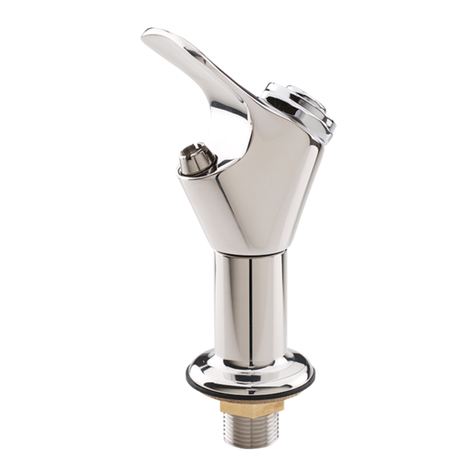
Haws
Haws 5010.6427SS Installation, operation & maintenance instructions
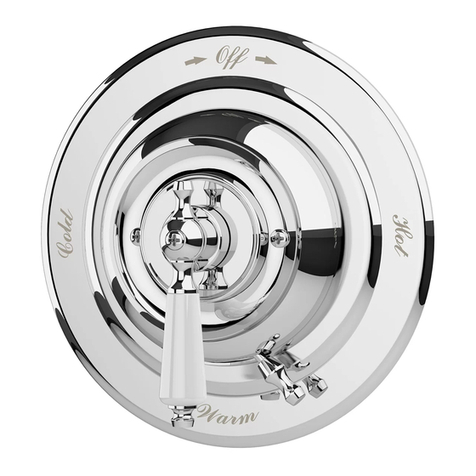
Symmons
Symmons Carrington Trim Series Operation & maintenance manual
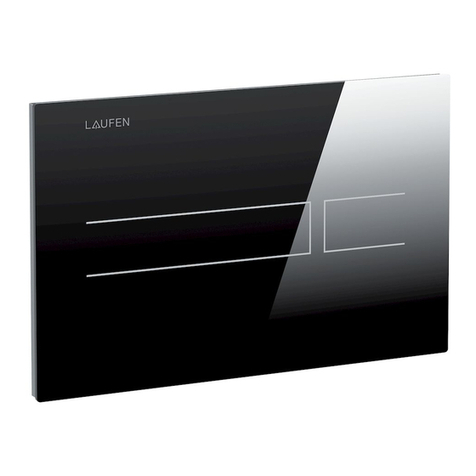
Laufen
Laufen LIS AW3 8.9566.3.020.000.1 instructions
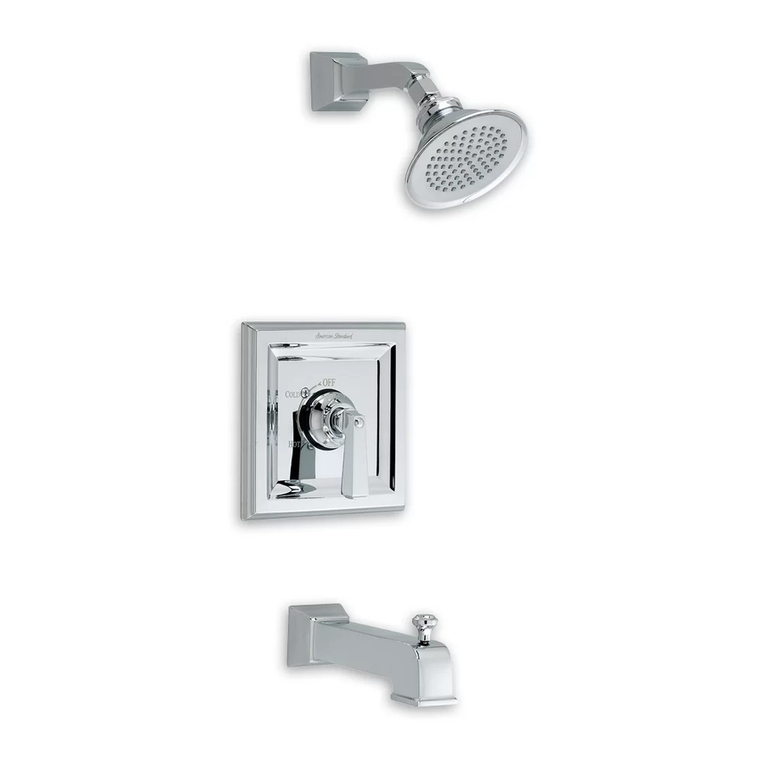
American Standard
American Standard TOWNSQUARE 2555.602 installation instructions

Sanela
Sanela SLU 01NHB Instructions for use
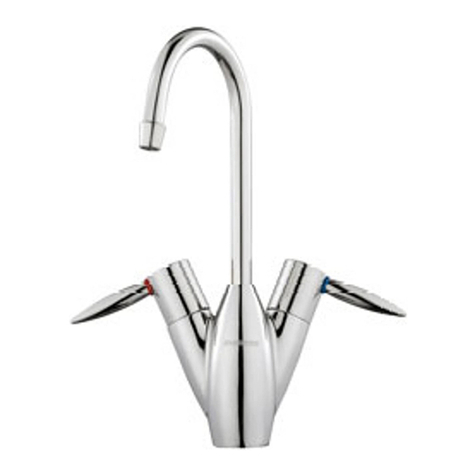
Everpure
Everpure Exubera EV9008-30 Specifications
